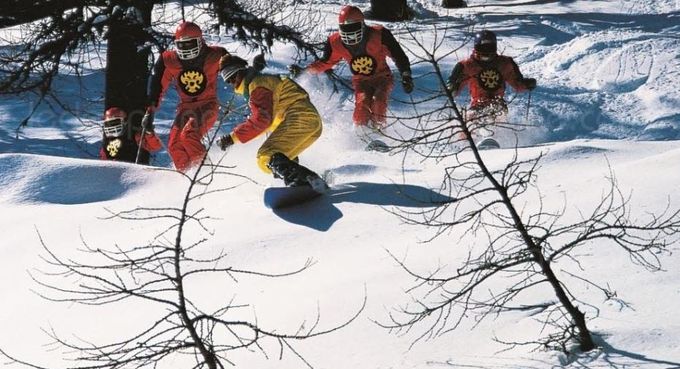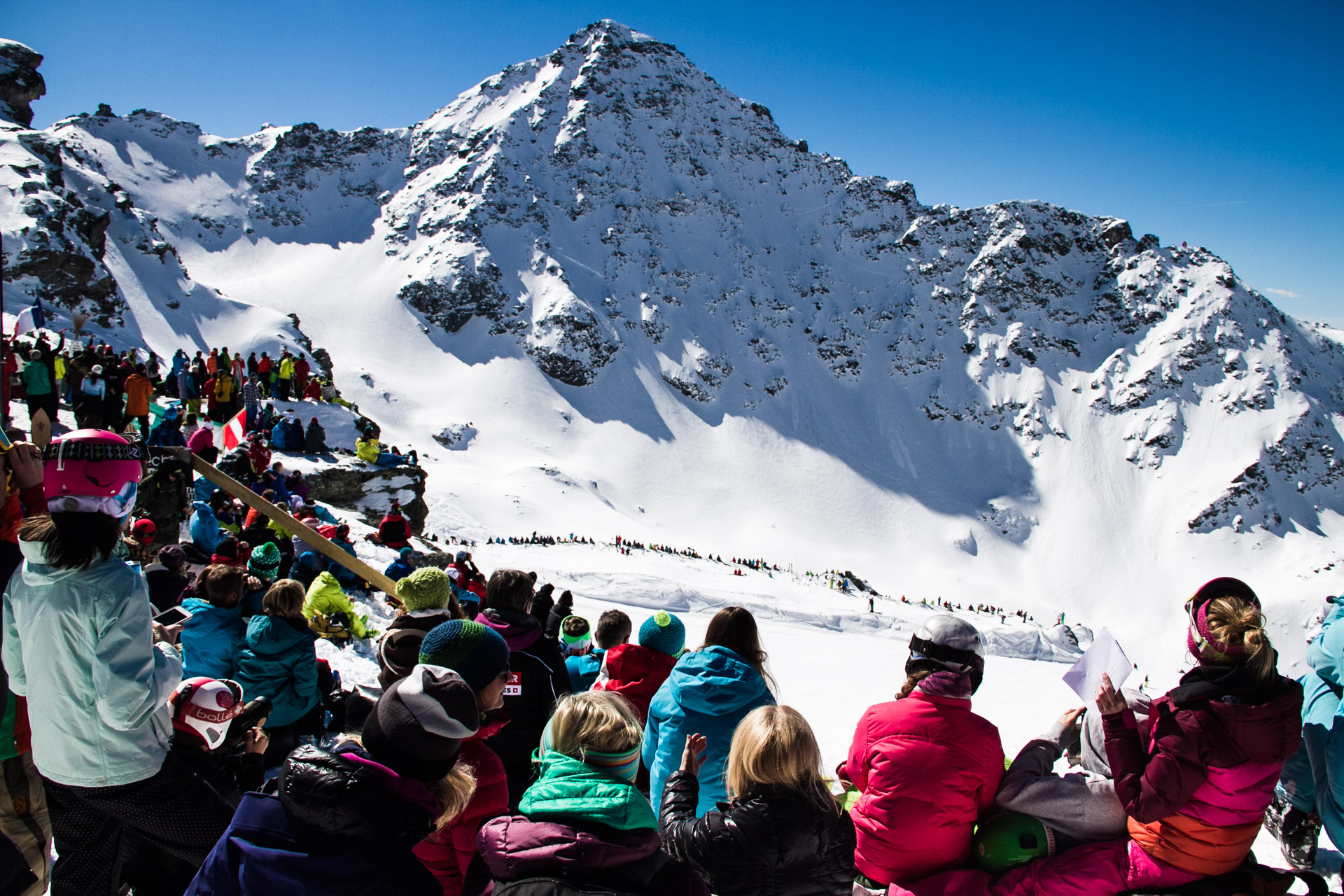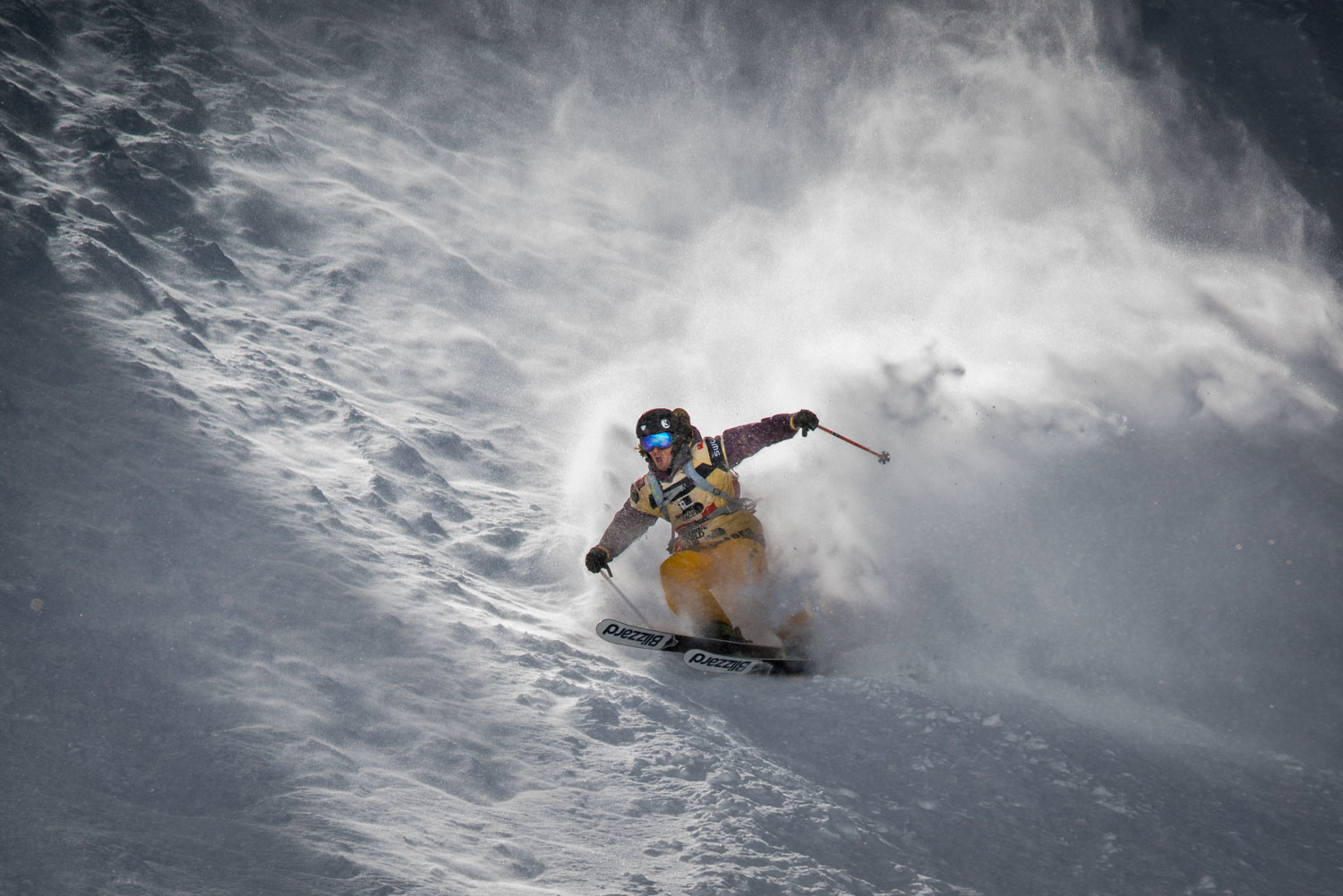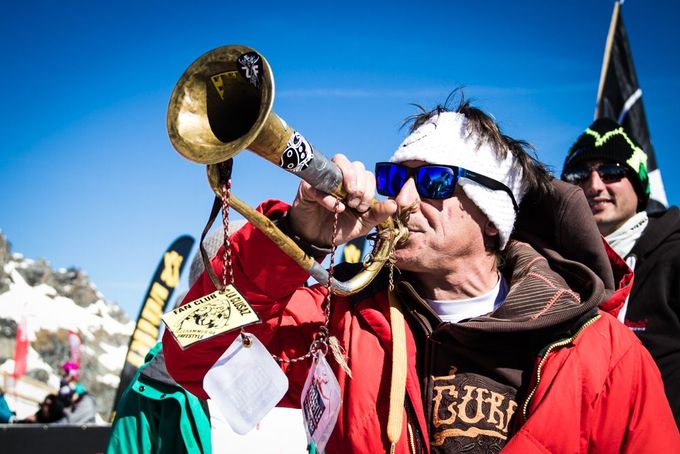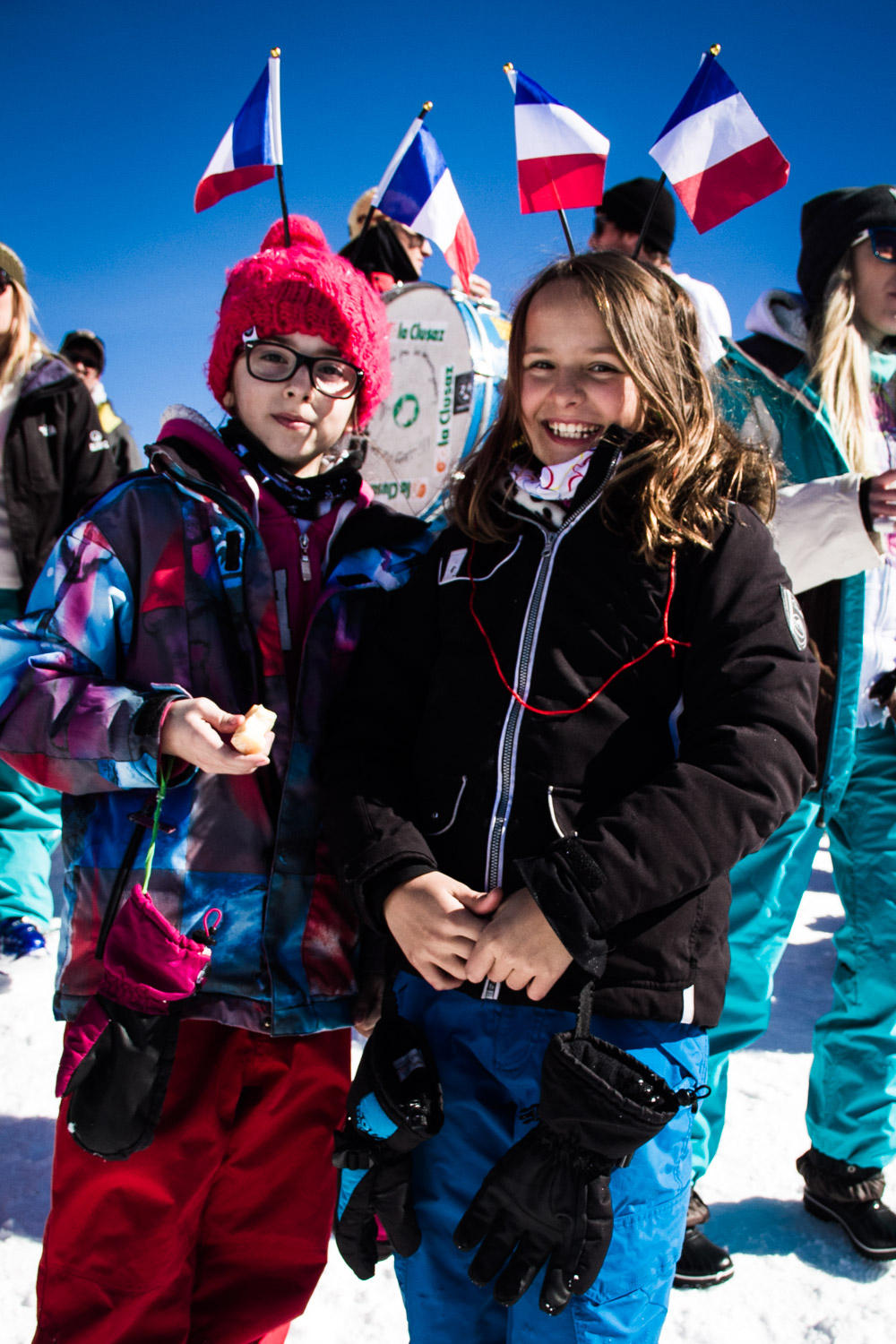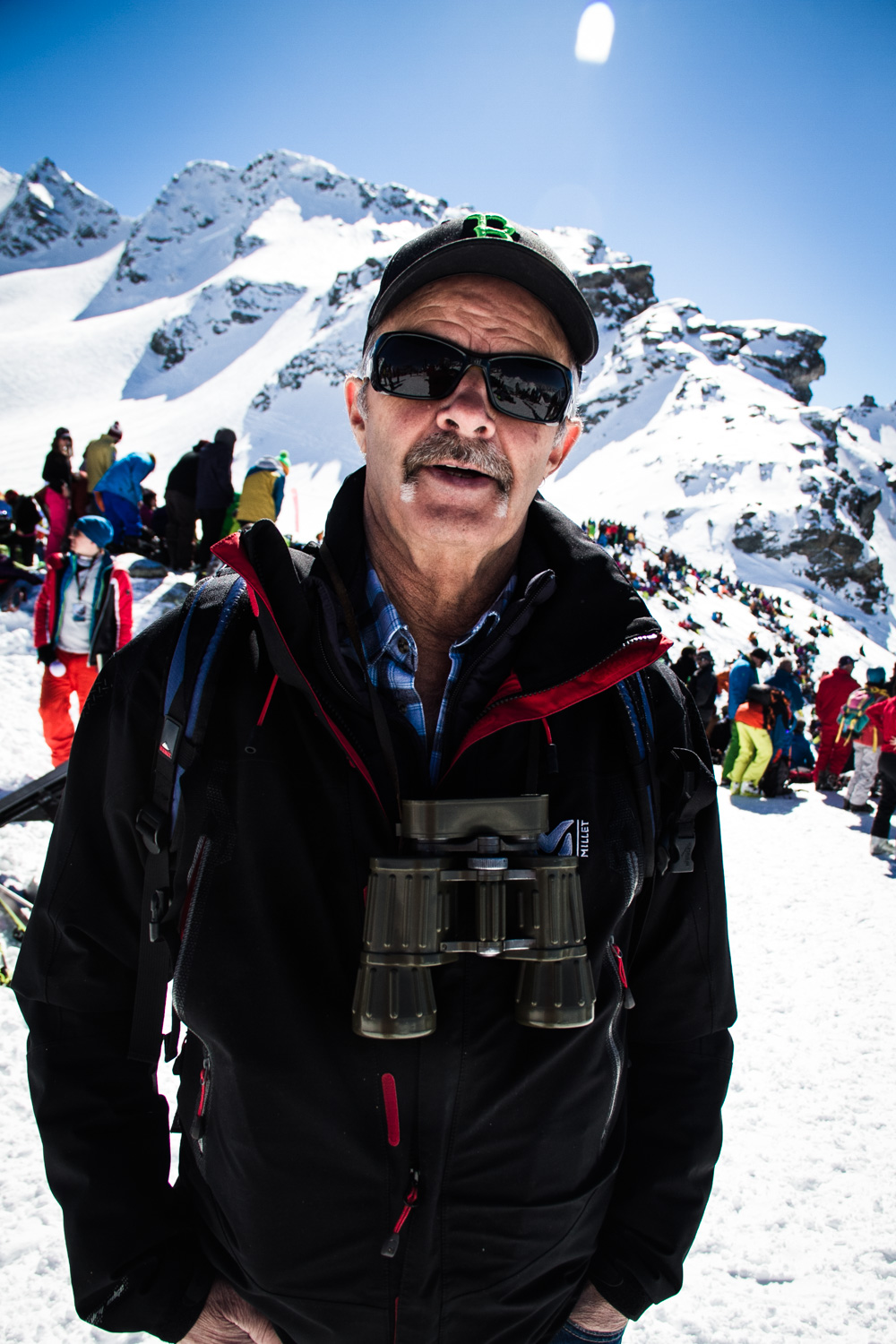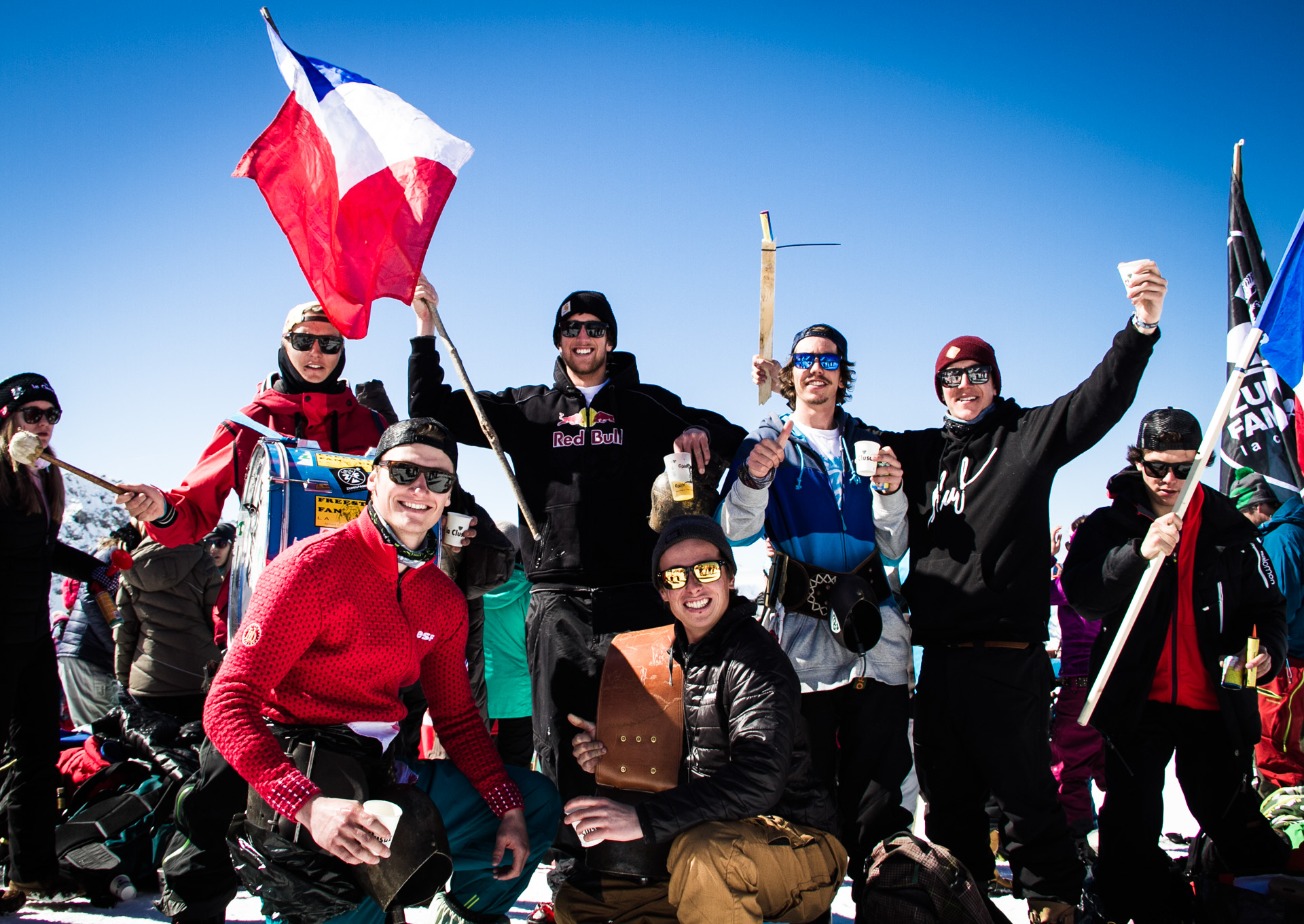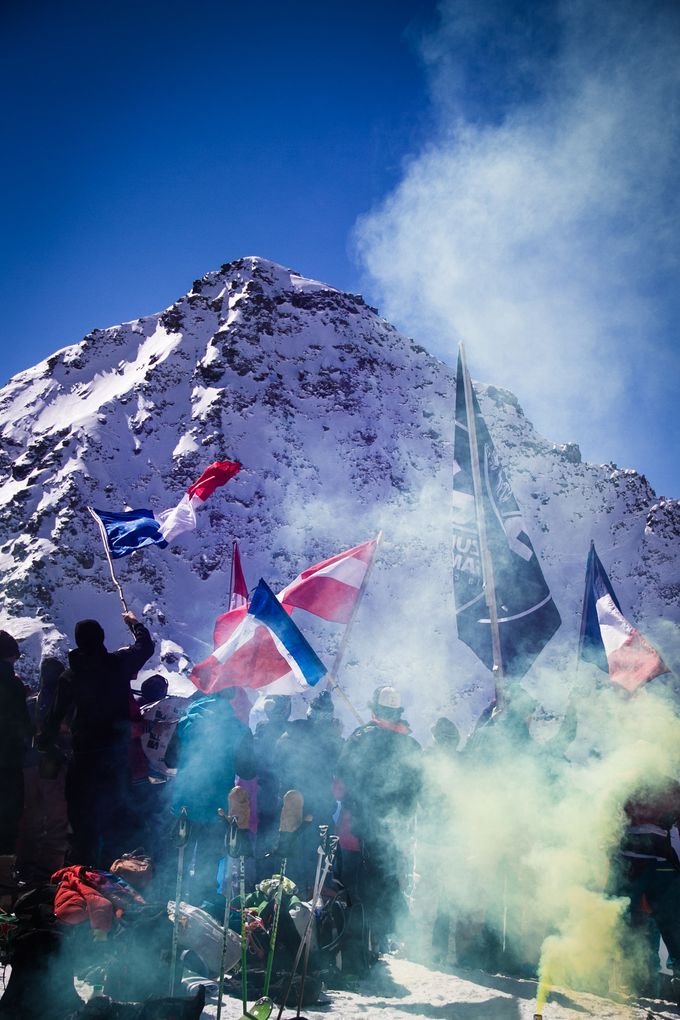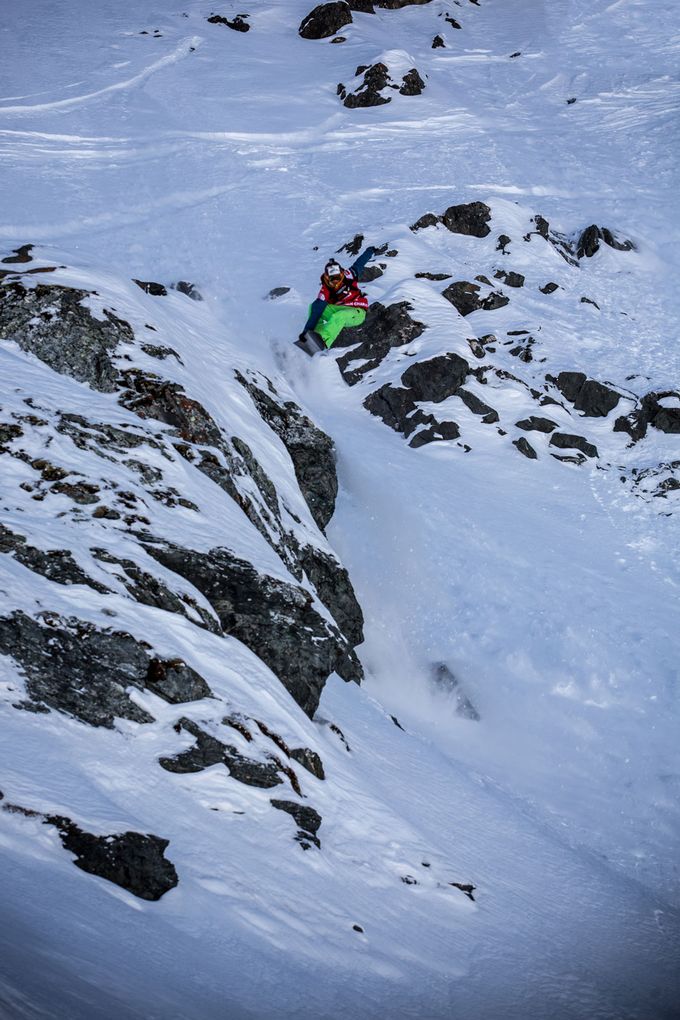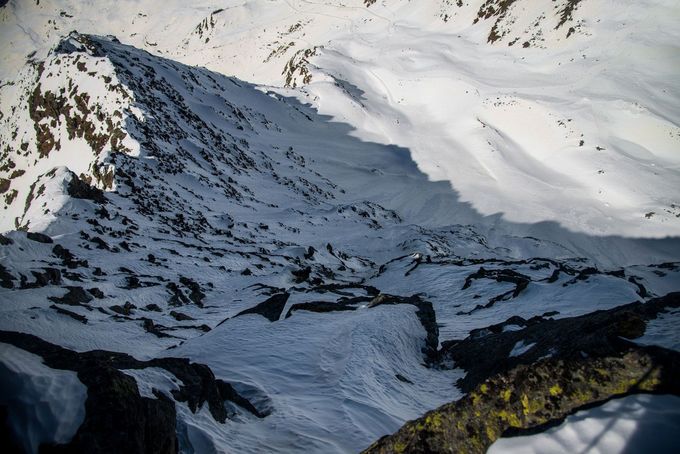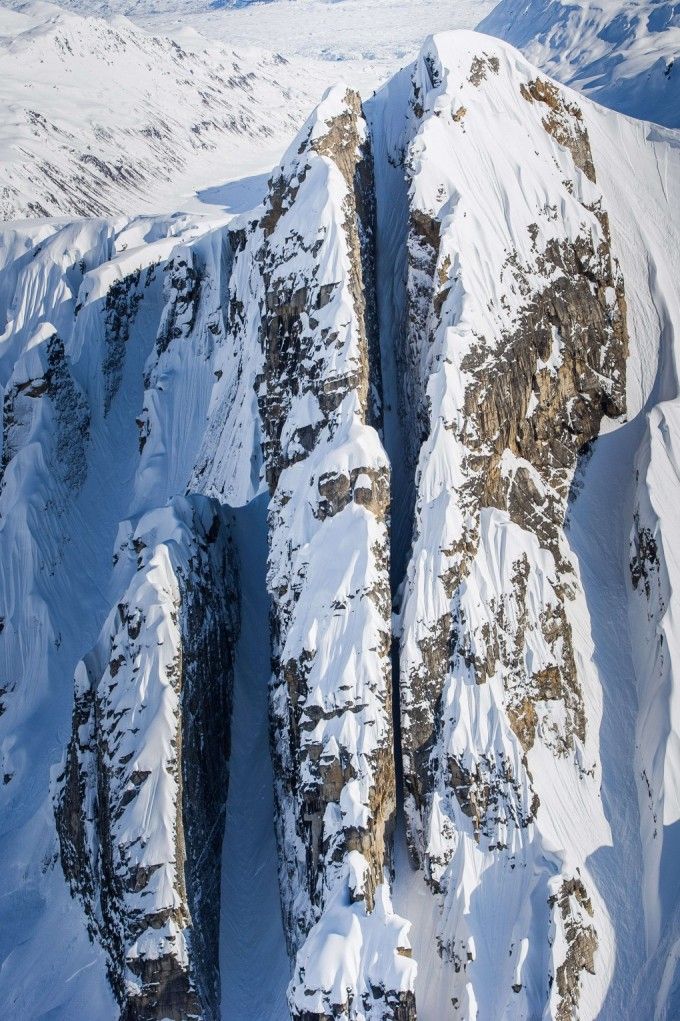Meanwhile the X Games, the biggest annual freestyle event in terms of media coverage, also attracts bigger viewer numbers than the FWT. Again stats for TV are hard to come by but Danny Chi, a spokesman for the ESPN-run competition, told Mpora: “This year we had a total of 12.1 million minutes viewed of X Games via Watch ESPN [their online subscription service] and the X Games website for the Aspen event.”
To match that online streaming figure, the 150,000 FWT fans tuning into watch the Alaska event would have to watch an average of an hour and a half of the three-hour broadcast – unlikely given the nature of attention spans online.
“Grizzled Swiss mountain men with fat skis or splitboards mingle with posh British families and young park rats.”
However, if freeriding viewing figures are still some way behind those for flagship freestyle events, they’re catching up. Even Chi admits that, for the average Joe, the complexities of modern freestyle can make it more difficult to understand than freeriding: “If you’re talking about a mainstream viewer who tunes in maybe once or twice a year to watch X Games then I think it’s not going to be as easily digestible for them.
“Hey, I’ve been working on the X Games a long time but I’m still not able to call all the rail tricks right,” he says. Although he explains that given the contest’s target audience, this isn’t necessarily a problem. “I could easily walk downstairs from my office in LA and very quickly flag down about a dozen kids who could do that for me.”
It’s not just modern tricks that make it hard for casual viewers to understand freestyle contests either. Rival tours run by the Federation Internationale du Ski (the FIS – who control the Olympic qualification process) and the World Snowboard Tour (the WST – seen by many riders as the legitimate governing body) make competitive freestyle snowboarding very hard to follow.
